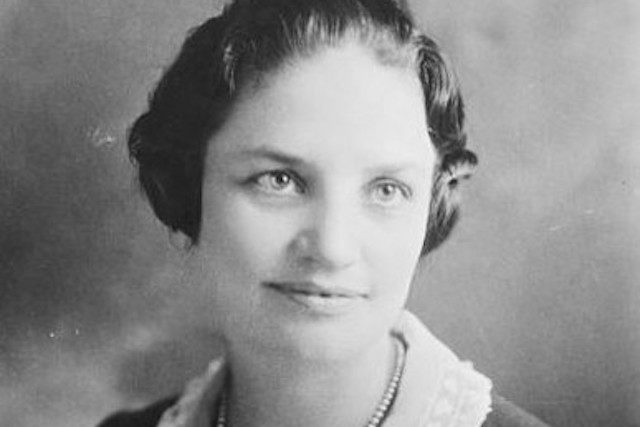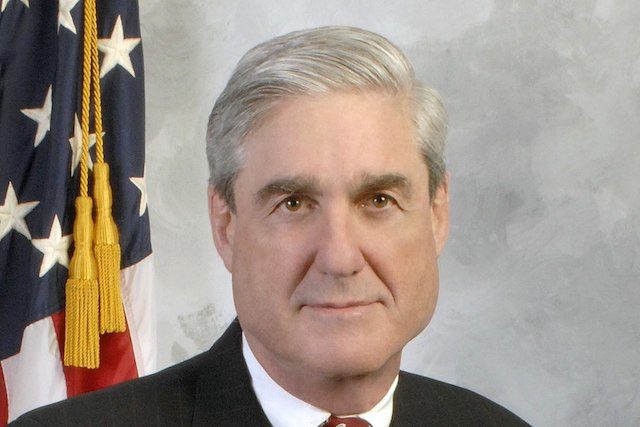So many of the most successful and celebrated stories are about singing the praises of notorious criminals from real life. Ed Gein has provided morbid fascination in multiple different thinly disguised forms, such as Norman Bates of Psycho. Ted Bundy has both biopics and a Netflix series. How many dozens of actors have been hired to make Al Capone look affably evil by now?
It’s a shame that the pedestals so many criminals are placed on have a tendency to cast shadows on the members of law enforcement that brought them to justice. This isn’t exclusively about the beat cops and investigators; we’ll also be devoting entries to district attorneys. After all, they are part of a separate but equally important group that represent the people, to paraphrase the classic television program Law & Order.
10. Frank Hamer

In 1906, Frank Hamer enlisted with the Texas Rangers. He served two years, resigned to work with the regular police, then was back with the Rangers in 1915 where he stayed until he retired in 1932. In 1934, he was brought back out of retirement for his biggest job: Pursuing celebrity bank robbers Bonnie Parker and Clyde Barrow. He and his posse of six tracked them down over the course of roughly three months after having the breakthrough that they must be hiding in one of the few locations where none of the teams of lawmen had even thought to look: Louisiana. Hamer had a friend of the robber duo pretend he had car trouble on the road to their hideout near Gibsland, and ultimately a jumpy team member opening fire before Bonnie and Clyde could surrender meant neither of the bank robbers got out of the situation alive.
As high profile as the take down of Bonnie and Clyde was, it was Hamer’s work while in the Rangers that was some of the most dramatic of his career. He was a very high profile opponent of the KKK when the terrorist group was at its most powerful, and his protracted feud with them would put him face to face with rallies and lynch mobs. In at least one instance in 1930, he faced literally hundreds of people in a mob and was almost incinerated attempting to save a black prisoner when the mob set fire to the jail housing the prisoner. He has been credited with saving more than a dozen people from lynching.
9. Mabel Walker Willebrandt

For decades, treasury officer Elliot Ness and his Untouchables got the lion’s share of credit for taking down Chicago crime lord Al Capone. More recent historical analyses have spread the praise around. Undoubtedly one of the most significant people involved was a partially deaf former school teacher from Kansas.
Having acquired her law degree in 1916 through night classes, for years Mabel Willebrandt was an advocate for prostitutes in about 2,000 cases. In 1921, she was appointed the Assistant Attorney General by President Warren Harding in time for the Volstead Act (alcohol prohibition) to go into effect, which occupied the bulk of her time and made her practically a household name at the time as “The First Lady of the Law.”
Her most significant case was that against one Manly Sullivan, a bootlegging South Carolinian lawyer. Since federal tax laws were in Willebrandt’s purview, she employed the unprecedented tactic of attempting to bust Sullivan for income tax evasion on his alcohol sales. Sullivan argued that he couldn’t disclose his illegal income on his tax forms as that would violate his fifth amendment rights, and so the case went up to the Supreme Court in 1927 in United States V Sullivan, one of 40 cases she argued in front of the highest court in the land. Her victory in court would allow for the successful case against Capone four years later.
8. Frank Worden and Art Schley

If you’ve ever wondered what it’s like to be one of the members of law enforcement who first steps into an eventually world famous crime scene, there are few stories more memorable than those of this deputy and sheriff in Plainfield, Wisconsin. On November 18, 1957, 35-year-old World War II vet Frank Worden was visiting his mother Bernice’s hardware store after a day of deer hunting. She was missing, there was evidence of violence behind the register, and there was a receipt for some antifreeze. Worden happened to have been in the store the day before when a regular customer was in and said he needed antifreeze, but left without buying anything. When two officers located the customer outside of a local store and asked if he would answer some questions, the customer claimed he was being framed. When they asked what he thought he was being framed for, the suspect admitted he knew that Bernice Worden was missing, and the customer was arrested. That evening, Worden and Art Schley arrived at the suspect’s home.
The suspect was Ed Gein. When Worden and Schley could not immediately enter Gein’s home because it was locked, they inspected his shed and Schley literally bumped into the body of the missing Bernice Worden, which he initially thought was a deer being butchered. The officers needed the backup of a 10 more men before they felt they could enter the soon to be world famous Gein home. Within days the community was flooded with press.
Schley was a man put in an extremely difficult situation for a small town officer, and he did not cope with it perfectly. During interrogation of Ed Gein, at one point Schley lost his patience and bashed the criminal’s head into the wall, meaning that the evidence of Gein’s confession was thrown out during his trial. Schley passed away from heart failure in 1968, and many were convinced that the deep trauma of Gein’s crimes had made him Gein’s final victim. Worden, by contrast, lived to the age of 78, passing away in 2001.
7. Ray Biondi
In January 1978, Lieutenant Ray Biondi of the Sacramento Police Department was investigating a crime scene with a bewildering piece of evidence left behind: A crumpled up yogurt container with blood next to the body of homicide victim Teresa Wallin. He also found little ringlets of blood around the crime scene. Fortunately, Biondi had recently taken a seminar with the FBI and began using the relatively new technique of building a psychological profile. The profile would be used to effectively track down the murderer but unfortunately only after the perpetrator dispatched most of a family four days following the murder of Teresa Wallin. When the Sacramento Police converged on the suspect’s home, he didn’t answer the door. Biondi and his team loudly pretended they were going to leave, hid in some nearby bushes, and waited for the suspect to come out carrying the remains of his victims and his gun. That suspect was Richard Chase, and he would become known as “The Vampire Killer,” with his crime spree inspiring such movies as Rampage.
While Richard Chase’s case was a more extreme example than most, it was only one of many for Ray Biondi. By the end of his 17 years working in homicide for Sacramento Police, he had worked roughly 500 cases. Even after his 1993 retirement he continued to do psychological profiles for the Federal Bureau of Investigation.
6. Robert Mueller

While lately his work leading the Russia Investigation has overshadowed the rest of his career, Bronze-Star recipient (who was shot in the leg during the Vietnam War) Robert Mueller still has one of the most significant convictions of recent decades on his resume. In 1991, John Gotti was one of the nation’s most prominent mobsters. He was estimated to have a net worth of $30 million, making him one of the 10 richest criminals in America at the time. He’d stood trial four times and walked free for three of them, one time receiving a short sentence where he was allowed to continue meeting with mob leaders. It looked in 1991 like Gotti would be able to keep his nickname, “Teflon Don.”
One of the keys to Mueller’s successful conviction was the testimony of one Sammy Gravano. Using his testimony was extremely risky for both parties. Gravano needed to confess to 19 murders for his testimony to be convincing, while flipping for the FBI meant he would be all the more likely to be killed in prison. Mueller’s methods to keep Gravano convinced and keep him alive was to make a big production of escorting him to the interview, complete with a large number of guards taking part. Another was an elevator trick which separated Gravano from other inmates and his mob attorney, ensuring Gravano could give his testimony to the FBI in secret. Thus was the evidence that put Gotti away for the rest of his life acquired, leaving Mueller with a reputation that would put him at the head of the FBI.
5. David Lee

Both a Pensacola, Florida patrol officer and a captain in the Florida Army National Guard, on February 15, 1978 David Lee was on patrol at 1:00 a.m. when he noticed the driver of a 1968 Volkswagen Beetle seemed to be peeping into people’s homes. He called it in, and after a Wants and Warrants check, it turned out the vehicle had been stolen three days prior. Lee successfully got the peeping driver to pull over. That brought him face to face with iconic mass murderer Ted Bundy.
David Lee did not have an easy time with Ted Bundy. When he told Bundy he was under arrest, Bundy managed to kick Lee’s legs out from under him and ran away. Lee fired two shots, the first a warning, and then took off after Bundy. He had to tackle the mass murderer, and even after that he needed to struggle with Bundy to avoid losing his gun. After overpowering Bundy, Lee searched the vehicle and found the IDs of three women inside. It took two days in jail for Bundy to give his real name.
You’d think David Lee bringing in one of the most notorious murderers of the 20th Century would mean that at least locally he would be something of a golden boy. In fact, within a year, Lee would be suing the Pensacola Police Department for being let go over scheduling disputes between his time in the National Guard and the department, a suit which dragged on into 1981. By 1989, when he was present for the execution of Bundy, he had moved on to be a captain in the Florida Game and Freshwater Commission.
4. Ken Landwehr.
It’s fairly common knowledge among the True Crime crowd that Dennis Rader, the notorious BTK Killer in Wichita, Kansas, was essentially tricked into giving himself up by being told he couldn’t be traced if he sent his messages to the press in the form of floppy disks. Less well known was the fact Rader felt compelled to send antagonizing messages to the press, because in 2004 Lieutenant Kent Landwehr put out a bunch of press releases that were deliberately coming to the wrong conclusions about the case. Rader’s unusually long reign of death as the BTK Killer, marked by sending messages to law enforcement and the media, had lasted from 1974 to 1991 before he stopped both his killings and communication. Still, Landwehr’s “mistakes” were too much of an attack on Rader’s ego, and in January 2005 he left the disks that would bring him down to be found. He would be identified after minutes of investigation and convicted in months.
Rader’s arrest was the crowning moment of a 20 year career as the head of homicide investigation. He was both extremely detail-oriented in investigating crime scenes and also supposedly able to deduce the chronology of a crime practically at a glance. He claimed one of the events that left him such a dogged investigator was his being taken hostage during a robbery in 1977 at the clothing store where he worked. The experience of being tied up with a gun in his face left him both deeply empathetic of other victims in such situations and irate at the potential incompetence of law enforcement, so he joined the police. He worked on more than 600 homicide cases before retiring in 2012.
3. Joseph Kozenczak

If you were Lieutenant Joseph Kozenczak of Des Plaines, Illinois, most likely the most vivid mental image of the biggest case in your career would be a crawlspace. For the rest of the country, the strongest impression of that case was a man in clown makeup. That’s because Korean War veteran Kozenczak was one of the officers that caught John Wayne Gacy in 1978.
Gacy while the body of Gacy’s last victim was in the attic. Gacy helped immeasurably to bring about his own downfall by trying to endear himself to Kozenczak and other investigators, inviting them back to his home with a basement full of bodies. When the investigators returned, the basement was flooded, causing the previously concealed bodies to emit a foul odor and alerting Kozenczak to their presence.
Within two years of arresting and extracting a confession from Gacy, Kozenczak would reach the rank of captain. In 1985 he became chief of the Des Plaines Police. In all, he would serve 27 years with the police. In retirement he continued to work as a private investigator and in such related careers as a regional security director for TNT Express. His 2015 obituary noted that he had a strong interest in the paranormal.
2. Sam Brower
For seven years, private investigator Sam Brower looked into and researched a single group he claimed was a criminal organization before publishing a book on it. That might seem like an enormous amount of commitment for a single investigation, but for Brower it was only the beginning. Four years after the book’s publication he took part in the adaptation of a 2015 documentary based on the book. Even as recently as May 2019 he was continuing his campaign against the organization. Is that perhaps nearly fanatical? Well, considering the crimes of the Jeffs family in the Fundamentalist Church of Latter Day Saints, Brower’s drive is pretty understandable.
Inspired to get into criminal investigation by the murder of his friend during a home invasion, Brower would work with both the United States Department of Justice and the Department of Labor. He began his investigation into the Mormon splinter group in 2004 (while being an adherent of the Mormon faith himself) and insisted that the FBI add Warren Jeffs to the most wanted list. Due to his investigations it came out that Jeffs was marrying extremely underage girls to abuse them. Jeffs’ conviction would leave him with a life plus 20 year sentence. Brower, however, was quick to point out that the cult’s abuse of minors did not end with Warren Jeffs’ imprisonment, and it also included putting them into labor at construction sites at dangerously young ages. In addition to his campaigning to end the FLDS’s ability to abuse children, Brower unsuccessfully ran for Iron County Commission in Utah in 2016.
1. Dominick Polifrone
If you knew about the life of Richard “Iceman” Kuklinski, you’d probably be afraid to be around him at all. He would claim that over the course of 30 years he had killed over 100 people using methods that ranged from head shots to beatings to poisoning, and with enough foresight that he would freeze bodies before dumping them to throw off autopsies trying to determine time of death. Still, Alcohol, Tobacco, and Firearms agent Dominick Polifrone would work undercover with him for a year and a half beginning in 1985, the whole time knowing that Kuklinski was very much the kind of person who killed partners in crime he distrusted with little hesitation. Polifrone’s stories would include hiring Kuklinski for a hit, hiring him for half a million dollars in weapons smuggling, and hiring him for poisoning training. It would be the poison training that brought Kuklinski down, with the case based primarily on Polifrone’s testimony.
Not that Kuklinski’s case was by any means Polifrone’s only accomplishment. He spent 30 years in law enforcement, roughly 15 of those undercover. He would infiltrate five major crime families during his career, and there were contracts taken out on him throughout that time. He has earned enough animosity from his work even in civilian circles that one of the most irritating events of his life was when he was at a wedding, and a young woman attacked him for ruining the life of her friend, Kuklinski’s daughter. Bizarrely, there are communities of people that have labeled Polifrone a traitor for working undercover to take criminals off the streets. Such is the weird life an undercover cop can lead.